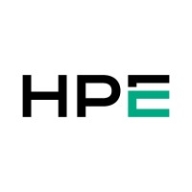

HPE BladeSystem and HPE Synergy are both competitors in the enterprise server market. HPE Synergy seems to have the upper hand due to its flexibility and advanced resource management capabilities, providing enhanced performance and centralized management that address modern infrastructure needs.
Features: HPE BladeSystem is recognized for its high reliability, strong iLO management, and compatibility with major network operating systems. Its modular design and minimal cabling add to its appeal. HPE Synergy offers composability, allowing seamless resource management and workload support. It also integrates enhanced storage and scalability through a unified approach with OneView management system, overcoming memory density issues found in BladeSystem.
Room for Improvement: HPE BladeSystem faces limitations with its chassis design, creating scalability issues and difficulties in integrating older hardware. There is a demand for more integrated management features and better backward compatibility. HPE Synergy struggles with the integration of third-party solutions, a complex setup process, and a high cost for additional options. Users seek improved firmware updates and better management of infrastructure complexity.
Ease of Deployment and Customer Service: Both BladeSystem and Synergy support on-premises deployments suited for enterprise environments. BladeSystem receives mixed reviews on customer service, showing effective support through escalations but issues at initial levels. HPE Synergy is praised for its responsive support and fast hardware replacements, although complex issues sometimes result in slower responses.
Pricing and ROI: HPE BladeSystem is pricey, justified by its performance and durability, with users finding its investment potential valuable despite competitive pricing pressures. Accurate solution sizing is emphasized for cost management. HPE Synergy has a higher upfront cost but promises significant operational savings and reduced infrastructure costs, resulting in a strong ROI thanks to its advanced capabilities and resource optimization.
I would rate technical support from HPE as an eight on a scale from one to ten.
I would rate the technical support from HPE Synergy, and for all other solutions, as very good and appreciable with a score of nine out of ten on a scale from one to ten.
I encounter challenges in identifying reasonable prices during the setup cost and licensing process, especially for scalability when we need to contact different vendors for quotes to find competitive offers.
I do not have to call HP support frequently, which indicates its reliability.
To do any customization, we need to contact HP technical support, and the process is not user-friendly.
In general, there is a 10% to 15% price gap compared to competitors.
Currently, it supports only two drives in the blade server, which can be limiting.
With around 19 years of exposure in working with various servers, including HPE, I encounter challenges in identifying reasonable prices during the setup cost and licensing process, especially for scalability when we need to contact different vendors for quotes to find competitive offers.
In general, there is a 10% to 15% price gap compared to competitors.
Pricing in the blade server market is very competitive, with HPE offering a competitive price.
The integration of storage and networking components within the HPE BladeSystem is quite beneficial as it is easily interoperable if we are using the same system for monitoring with the same software, which eliminates interoperability issues.
The feature I find most valuable is the ease of use.
It offers significant compute power in approximately ten rack units, making it practical for workload optimization.
| Product | Market Share (%) |
|---|---|
| HPE Synergy | 17.4% |
| HPE BladeSystem | 12.9% |
| Other | 69.7% |


| Company Size | Count |
|---|---|
| Small Business | 29 |
| Midsize Enterprise | 40 |
| Large Enterprise | 103 |
| Company Size | Count |
|---|---|
| Small Business | 30 |
| Midsize Enterprise | 15 |
| Large Enterprise | 56 |
HP ProLiant BladeSystem share power, cooling, network, and storage infrastructure via the blade enclosure. Since equipment is not needed for each server, you get a dramatic reduction in power distribution units, power cables, LAN and SAN switches, connectors, adapters, and cables. And you can add the newest-generation technologies by simply changing individual components.
HPE Synergy, the first platform built from the ground up for Composable Infrastructure, offers an experience that empowers IT to create and deliver new value instantly and continuously. It is a single infrastructure that reduces operational complexity for traditional workloads and increases operational velocity for the new breed of applications and services. Through a single interface, HPE Synergy composes physical and virtual compute, storage, and fabric pools into any configuration for any application. As an extensible platform, it easily enables a broad range of applications and operational models such as virtualization, hybrid cloud, and DevOps. With HPE Synergy, IT can become not just the internal service provider but the business partner to rapidly launch new applications that become the business.
We monitor all Blade Servers reviews to prevent fraudulent reviews and keep review quality high. We do not post reviews by company employees or direct competitors. We validate each review for authenticity via cross-reference with LinkedIn, and personal follow-up with the reviewer when necessary.